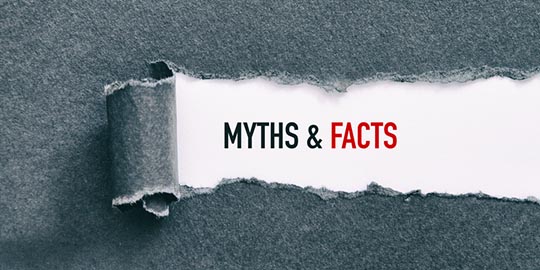USP Chapter <797> Pharmaceutical Compounding—Sterile Preparations has been a standard since 2004, with revisions in 2008 and 2019 (the latter to be official December 1, 2019).1,2 Any document with this much history tends to develop some myths. Let’s dispel a few of the common ones.
I only check IVs, so I don’t need to complete the media fill and gloved fingertip tests.
Not true. Checking IVs is more than confirming the ingredients listed on the label. Anyone involved in the compounding and checking process needs to demonstrate competency in this function. That includes all the elements of core competencies listed in USP Chapter <797>, including successful completion of the media fill and gloved fingertip tests initially and every six months, observation of hand hygiene and garbing initially and every six months, and other didactic and return demonstrations required in <797> and by your health system policy initially and every 12 months.
All pharmacists at my site have equal authority in handling concerns in the IV room.
Not necessarily true. USP Chapter <797> requires each site to have at least one designated person who oversees the requirements of the chapter, including personnel orientation and monitoring, facility monitoring, development and implementation of policies and procedures, and related activities. Most organizations select a single individual to fill this role. It does not necessarily need to be a pharmacist (perhaps a lead technician is appropriate), nor does it need to be a manager or require that the designated person oversee only a single site. Select the best person in your pharmacy to fulfill this vital role.
The only ophthalmic preparation that has to be sterile is an injection.
Not true. All ophthalmic preparations, including eye drops, must be compounded as sterile preparations.
I can use the full beyond-use dates in USP Chapter <797> if I have a glove box outside a cleanroom.
Not true. Compounding aseptic isolators (CAIs) are one of the acceptable types of primary engineering controls (PECs). Revised USP Chapter <797> allows the full beyond-use dates (BUDs) for PECs only if they are in a cleanroom suite. If they are in a segregated compounding area (SCA), compounded sterile preparations (CSPs) mixed in a CAI are limited to a BUD of 12 hours if stored at room temperature or 24 hours if refrigerated.
IVs have to be fully infused before the end of the beyond-use date.
Not true. The BUD is the time between compounding and when administration to the patient starts. If the drug is stable in the container and closure, it can be infused until completed.
I can attach – but not activate – proprietary vial and bag systems in the anteroom and use the BUD the manufacturer provides.
Not true. If a nurse is going to attach and activate a vial/bag system just before administration of the drug, that can be done on the patient care unit. But if you are attaching, but not activating, one of these systems and storing it for future use, it must be done in a PEC. Because these are FDA-approved drugs with specific labeling information, you can use the BUDs the manufacturer states in the package insert and are not limited to the BUDs that apply for other compounded preparations.
As long as our electronic pressure monitors are green, the pressure is okay.
Not necessarily true. Check that the range is set correctly. The anteroom must be at least 0.020 inch water column (WC) positive to the adjacent areas. For nonhazardous areas, the buffer room must be at least 0.020 inch WC positive to the anteroom. For hazardous areas, the buffer room or containment segregated compounding area must be between 0.010 and 0.030 inch WC negative to the adjacent areas.
The humidity in our IV room is low, and our facilities department says we must increase it.
Not true. The humidity risk in a sterile compounding area occurs when the humidity is high, since it is a microbial risk. There is no low limit of humidity for an IV room. You cannot add in a water source, since that would be a microbial risk. Your facilities department may think that the IV room needs to have the same humidity range as the surgical suites, which need a relative humidity above 20% to prevent fires.
I need to use sterile alcohol to clean the IV room floors.
Not true. Alcohol is not a cleaner; it is a sanitizer or disinfectant. There is no value in using alcohol on your floors. You need to use a detergent.
I can wait until my certifier returns in six months to do follow-up sampling if the action level has been exceeded.
Not true. If an air or surface sample comes back with results above the action level, you need to take several steps:
- Attempt to determine the source of the issue,
- Attempt to remediate the situation, and
- Retest to be sure your changes have succeeded in mitigating the issue.
This is one of the reasons that the surface sampling frequency in revised USP Chapter <797> is monthly. That gives you an opportunity to target specific areas of concern and obtain results in a timely manner.
Conclusion
Many educational resources concerning sterile compounding are available. Be sure you have complete information from the Chapter (available at www.usp.org) as you review and revise your policies and procedures.
More Information
References
- The United States Pharmacopeial Convention. General chapter <797> pharmaceutical compounding—sterile preparations. In: USP Compounding Compendium. https://www.usp.org/compounding/general-chapter-797 (accessed 2019 July 24).
- FAQs: <797> pharmaceutical compounding—sterile preparations. https://www.usp.org/frequently-asked-questions/pharmaceutical-compounding-sterile-preparations (accessed 2019 July 24).
Selected Resources
- ASHP Sterile Compounding Resource Center. https://www.ashp.org/Pharmacy-Practice/Resource-Centers/Sterile-Compounding (accessed 2019 July 24).
- Critical Point Peer Network. https://peernetwork.criticalpoint.info/ (accessed 2019 July 24).
- Pharmacy Practice News. https://www.pharmacypracticenews.com (accessed 2019 July 24).
- Pharmacy Purchasing and Products. https://www.pppmag.com (accessed 2019 July 24).

